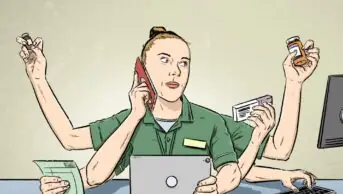
Shutterstock.com
Just under one in four patients would have gone without their medicine if a pharmacist had not supplied it via the NHS Urgent Medicines Supply Advanced Service (NUMSAS), according to an initial evaluation carried out by NHS England.
The evaluation was based on a pilot of the NUMSAS service, which was launched in phases across England in December 2016. It revealed that 3,674 pharmacies had registered for the service in England as of 8 January 2018 and 29,177 items were supplied under the scheme by community pharmacy between December 2016 and October 2017.
The top five drugs dispensed under the NUMSAS scheme were Ventolin (100mg), salbutamol (100mg), sertraline (100mg), sertraline (50mg) and citalopram.
In a patient survey, which received 1,928 responses, it was found that 93% of patients were very satisfied with the service and just 1% claimed to be dissatisfied. Furthermore, 24% said that if the pharmacist had not made a supply they would have gone without their medicines; 6% said they would have contacted either their, or another, GP practice; 41% said they would have contacted the GP out-of-hours service; and 20% said they would have gone to an urgent care centre such as A&E.
Two points were identified by the evaluation on which pharmacy teams have been asked to take action. The first is on completing patient questionnaires, as it was found that just 15% of patients who have received the service had filled one out. The other was around completing the FP10DT EPS tokens when a supply is not made, as the evaluation found that 29% of the tokens made out did not include the name of the medicine that had been supplied.
The NUMSAS pilot scheme, which is being funded by the Pharmacy Integration Fund, was originally scheduled to come to an end in March 2018, but it will now run until the end of September 2018 to enable further evaluation.


